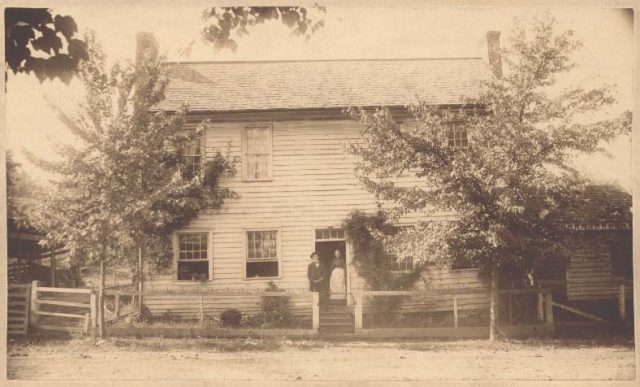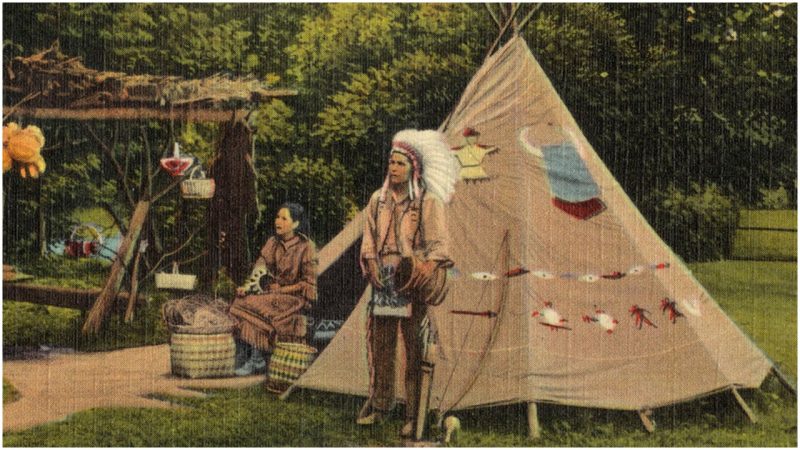Kingston, Tennessee, not only marks a convergence of three rivers, but it was once an important overlapping of cultures, too. The Clinch, Emory, and Tennessee rivers flowed together there and it was an important gathering area for the Cherokee who inhabited the land long before white settlers began arriving.
Things began changing fast for the Cherokee in the first four decades of the 1800s as agreements were made and repeatedly broken by whites. This happened despite the fact that the Cherokee tried harder than almost any other native American people to assimilate into the white man’s world.
One of the broken deals involved Pathkiller, a local Cherokee who had served as a colonel under Andrew Jackson in the Tennessee Militia during the Creek War. Pathkiller was granted a 640-acre reservation that included a ferry service across the Clinch River– but was then evicted from his land.
To the Cherokees, one betrayal by whites stands out for the sheer magnitude of its insult and shady dealings.

At the time, the state capital was Knoxville, Tennessee, to the east, but the Cherokee were looking to gain political clout. They made an agreement with state leaders to give up a small, but important, parcel of land at Kingston if the then-frontier town would be made capital. The Cherokee figured the deal would give them long-term access to white leaders and proceedings that would only help the tribe’s cause.
They were pleased when Tennessee officials agreed and a plan was drawn up and approved. The year was 1806, when the state General Assembly gathered in Knoxville and agreed that lawmakers would next meet in Kingston.
And sure enough, on September 21, 1807, the General Assembly met at Kingston, which thus became the second capital of Tennessee. However, the state lawmakers, working under then-Governor John Sevier, adjourned on the same day to meet two days later at Knoxville. They never came back.

State officials noted they never formally agreed to make Kingston the capital on a permanent basis. And that’s how Kingston earned its ignoble nickname, Capital for a Day.
Not everyone was dishonorable in their dealings with the Cherokee. Fort Southwest Point was built in Kingston to keep the peace between settlers and the Cherokee, and one leader of the fort made it his mission to try to keep things fair and honest.
A colonel named Return J. Meigs came to Fort Southwest Point at the turn of the 19th century as an Indiana agent for the federal government. The Cherokee had no reason to trust him, but he earned it. Meigs proved to them he would not tolerate settlers invading Cherokee land. He actually sent his soldiers to destroy the homesteads of settlers who tried to illegally take Cherokee land. He also required settlers passing through Indian territory to file passports declaring what property they were traveling through to prevent them from stealing from the Indians.
And while Meigs was in charge, the Davis School for Cherokees was established to teach English to Indian children. And so he served for 23 years, until his death. Out of respect, the Cherokee gave him a name of their own: The White Path.
Unfortunately, the likes of honorable men like Meigs were sparse in those times, and things were about to get much darker for the Cherokee.
In 1838, then-President Andrew Jackson ordered the removal of the Cherokee and other tribes in a forced march to the west along what is now called the Trail of Tears. Conditions were harsh and many died on the way to reservations in Oklahoma.
Not all Cherokee were gathered, however. Some members of the East Tennessee Cherokee hid in the mountains or caves and escaped roundup, and others stayed with their white or mixed-race families.
To this day, many people in the area count Cherokee as part of their ancestry.
Terri Likens‘ byline has appeared in newspapers around the world through The Associated Press. She has also done work for ABCNews, the BBC, and magazines that include High Country News, American Profile, and Plateau Journal. She lives just east of Nashville, Tenn.
